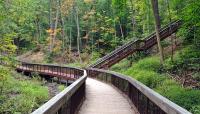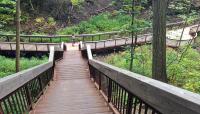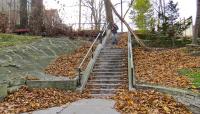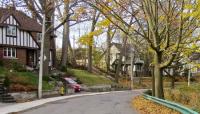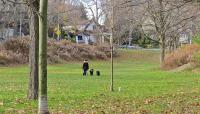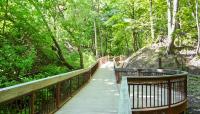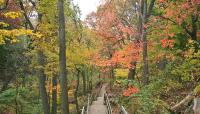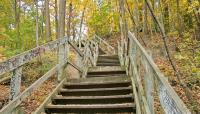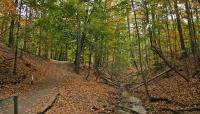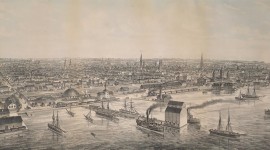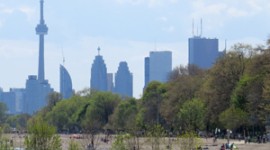This park in Toronto’s Beaches neighborhood is synonymous with the Glen Stewart Ravine, an eleven-hectare, densely forested ecosystem supporting a variety of bird and plant species that thrive among predominately red oaks and red maples, as well as black cherry, hemlock, and yellow birch. The area takes its name from Glen Stewart, the nearby estate built south of Kingston Road by William Stewart Darling, who purchased much of the surrounding land in 1872. The property was later sold to Alfred Ernest Ames, who allowed the public to walk the grounds and trails freely. Although the Provident Investment Company developed much of the area in the early 1920s, the ravine remained unspoiled, and was acquired by the City of Toronto in 1931. In 1982, the Toronto and Region Conservation Authority designated the ravine an Environmentally Significant Area, and in 2011 the park underwent a program of revitalization led by EDA Collaborative.
The ravine can be entered on the north from Kingston Road and Beach Avenue, on the south from Glen Manor Drive (which skirts much of the park’s western border), and on the west from Balsam Avenue, where a staircase trimmed in hemlock descends to the forest floor. There, an elevated boardwalk meanders beside the spring-fed Ames Creek, connecting pedestrian walkways that cross wetlands cradled by steep, wooded slopes. Elsewhere the trail is bordered by a wooden, three-rail-post fence, while a pedestrian footbridge spans the ravine at Pine Glen Road, connecting it to Williamson Road. Just south of the bridge, two natural ice rinks are created seasonally for skating and hockey.





